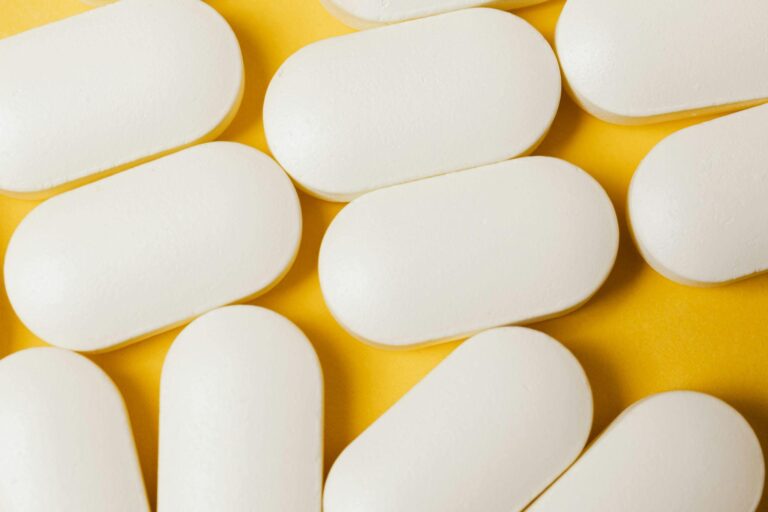Meth sores, commonly known as “meth mites,” are detrimental skin conditions associated with prolonged methamphetamine use. These lesions manifest as painful open wounds or scabs, primarily resulting from compulsive scratching driven by hallucinations of insects on the skin. The interplay of poor hygiene and a compromised immune system in users further complicates these sores, leading to heightened infection risks. Understanding the underlying factors and implications of meth sores is vital, yet the broader impact on health and recovery remains a pressing concern that merits deeper exploration.
Definition of Meth Sores
Meth sores, commonly referred to as “meth mites” or “crank bugs,” are skin lesions that result from the chronic use of methamphetamine. These sores typically appear as open wounds, scabs, or sores on the skin, often triggered by compulsive scratching and picking at perceived irritations.
Individuals who engage in meth use may develop these skin infections due to the drug’s effects on both the body and mental state, leading to a decline in personal hygiene and increased susceptibility to infections.
As methamphetamine stimulates the central nervous system, users may experience tactile hallucinations, believing that insects are crawling on their skin. This sensation prompts aggressive scratching, resulting in damaged skin and the formation of sores.
The presence of meth sores not only signifies the physical toll of substance abuse but also serves as a visual indicator of the underlying issues related to addiction.
Addressing meth sores requires a multifaceted approach that includes medical treatment for the skin lesions and thorough support for substance abuse recovery.
Seeking help from a dedicated program can help individuals regain control over their lives and improve their overall health and well-being.
Causes and Symptoms
Chronic substance abuse, particularly with methamphetamine, leads to a range of causes and symptoms associated with meth sores. The primary cause of these sores is the intense scratching and picking of the skin, often driven by the psychological effects of meth use, such as paranoia and hallucinations. Users may feel insects crawling under their skin, prompting compulsive behaviors that result in open wounds and infections.
Addiction signs, including neglect of personal hygiene and deteriorating physical appearance, can further exacerbate skin issues. As meth users become increasingly preoccupied with the drug, their immune systems weaken, making them more susceptible to skin infections. These infections can complicate existing sores, leading to more severe health consequences.
Recognizing these symptoms is vital for individuals considering recovery support. Early intervention can help mitigate the severe effects of meth use and improve overall health.
Health Risks and Complications
The presence of meth sores is indicative of deeper health risks and complications associated with prolonged methamphetamine use. These sores often result from compulsive skin picking and can serve as gateways for serious skin infections, which may require medical intervention.
The health consequences of meth use extend beyond physical symptoms; they encompass a wide range of psychological effects, including emotional distress. Individuals may experience heightened anxiety, paranoia, and a sense of emotional instability, further exacerbating their overall condition.
Long-term effects of methamphetamine use can lead to significant deterioration of both physical and mental health. Chronic users may develop severe dental issues, malnutrition, and cardiovascular problems, in addition to the visible signs of meth sores.
The impact on mental health is equally concerning, as the drug can alter brain function, leading to cognitive impairments and increased susceptibility to mental health disorders.
Addressing these health risks is vital for anyone considering recovery programs. Recognizing the severity of complications associated with meth use can provide the motivation needed to seek help and begin the journey toward healing and rehabilitation.
Treatment and Recovery Options
Numerous treatment and recovery options are available for individuals struggling with methamphetamine addiction, each tailored to meet specific needs and circumstances.
Effective treatment programs often combine medical intervention with behavioral therapies to address both the physical and psychological aspects of addiction.
Support groups, such as Narcotics Anonymous, provide a community of individuals who share similar experiences, fostering a sense of belonging and understanding.
These groups can be instrumental in maintaining motivation and accountability throughout the recovery journey.
Holistic therapies, including mindfulness, yoga, and nutritional counseling, can complement traditional treatments by promoting overall well-being and stress reduction.
These approaches can help individuals develop healthier coping mechanisms.
Relapse prevention is a critical component of recovery, equipping individuals with strategies to manage triggers and cravings effectively.
This often involves personalized plans and skills training to navigate challenging situations.
Aftercare programs play an essential role in sustaining recovery beyond initial treatment.
These programs may include continued therapy, regular support group attendance, and ongoing education about addiction.
Final Thoughts
Meth sores represent a significant health concern associated with chronic methamphetamine use, characterized by painful skin lesions resulting from compulsive scratching and picking. The underlying causes relate to tactile hallucinations, poor hygiene, and a compromised immune system. These sores pose severe health risks, including infections and complications that hinder recovery. Effective treatment options exist, but addressing the root causes of methamphetamine addiction remains essential to prevent recurrence and promote overall healing.
At Altitude Recovery, we’re committed to lifting you from the depths of substance use challenges to the heights of recovery and resilience. Our expert team provides personalized, evidence-based treatment services designed to support your distinct path towards healing. Reach out to us for the understanding and compassionate care you deserve on your journey to wellness.
Frequently Asked Questions
Can Meth Sores Be Mistaken for Other Skin Conditions?
Meth sores can indeed be mistaken for various skin infections or other dermatological conditions due to their appearance.
Substance abuse can lead to significant mental health challenges, which may exacerbate skin issues.
It is vital for individuals experiencing such symptoms to seek professional evaluation.
Treatment options vary, and addressing both the skin condition and underlying substance abuse is important for effective recovery and overall well-being.
Professional guidance is recommended to guarantee appropriate care.
How Long Do Meth Sores Typically Last?
The duration of meth sores can vary considerably based on individual circumstances, including the severity of meth addiction and overall skin care practices.
Typically, these sores may last from a few days to several weeks, depending on the healing process and whether appropriate treatment options are pursued.
Engaging in an extensive drug abuse program can facilitate recovery and improve skin health, promoting more effective healing and reducing the likelihood of future sores.
Are Meth Sores Contagious to Others?
Meth sores are not contagious; however, they can pose a significant infection risk.
Individuals struggling with meth addiction often neglect skin hygiene, leading to open wounds that may become infected. The healing process for these sores can be prolonged if proper care is not taken.
Addressing underlying addiction issues through a drug abuse program can help improve overall health, promote better skin care practices, and reduce the likelihood of developing such sores.
Do Meth Sores Leave Permanent Scars?
Meth sores can potentially lead to permanent scarring depending on the severity and subsequent care.
Effective scarring treatment options, such as topical therapies and dermatological procedures, can aid in minimizing scars.
Additionally, understanding skin healing processes is essential for recovery.
Incorporating proper personal hygiene practices can prevent further skin damage during addiction recovery support.
Seeking professional guidance in a drug abuse program can provide valuable resources for both physical and psychological healing.
What Should I Do if I See Someone With Meth Sores?
If you observe someone exhibiting signs of meth sores, it’s essential to approach the situation with compassion and urgency.
Consider utilizing intervention strategies that prioritize their well-being. Encourage them to seek support resources, such as counseling or addiction recovery programs.
Providing health education about the dangers of substance abuse and the importance of professional help can foster addiction awareness.
Your involvement can be a significant step toward their path to recovery and improved health.





